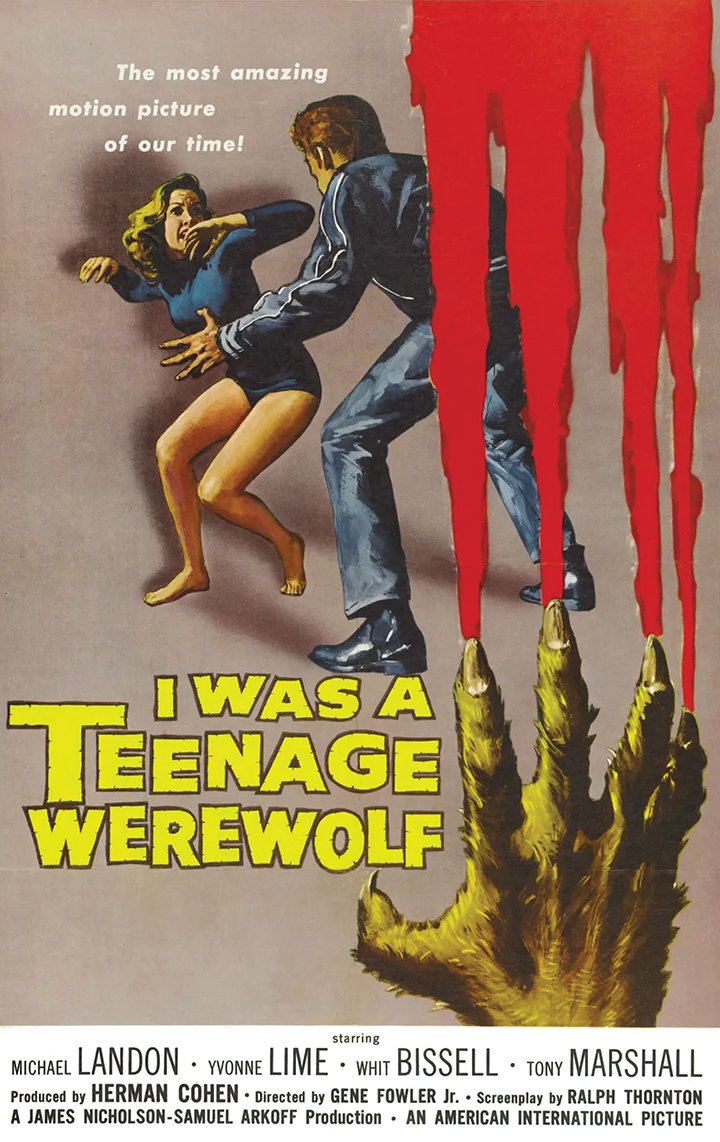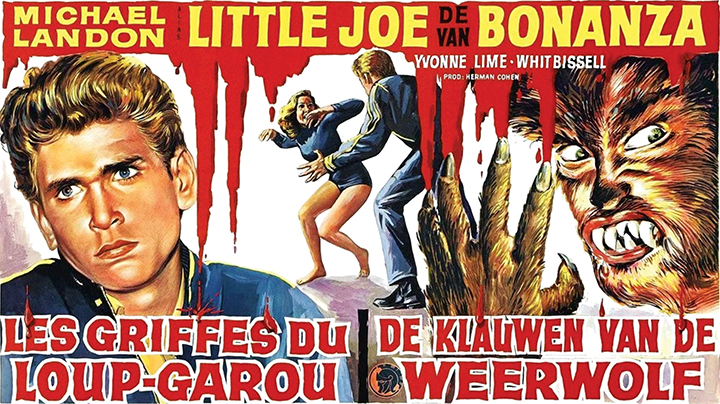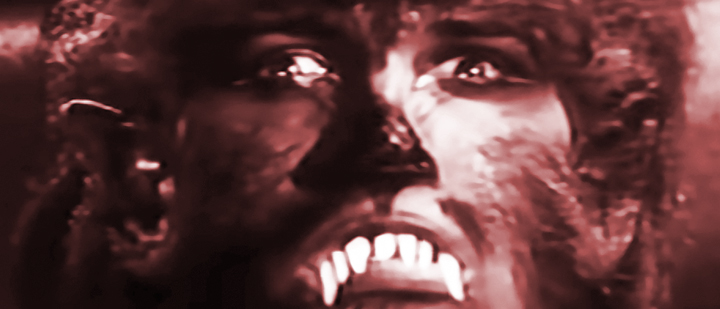
Monster without a cause
By Mark Voger, author
‘Britmania: The British Invasion of the Sixties in Pop Culture’
Steamy drive-in makeout sessions aside, it’s no mystery why Gene Fowler Jr.’s “I Was a Teenage Werewolf” was such a box-office smash. The film is about something perhaps worse than being a monster. It’s about being a teenager in 1950s America.
The surprise hit altered the fortunes of the indie machine American International Pictures (AIP), and provided future “Bonanza” star Michael Landon with his first featured role in a motion picture as Tony Rivers, an angst-ridden teen who is transformed into the first movie werewolf to wear a letter jacket. (Rah! Rah!)
Landon’s character has more than a passing resemblance to James Dean’s Jim Stark from 1955’s “Rebel Without a Cause.” Tony, too, has a short fuse and daddy issues. He’s obstinate and frequently violent, and yet, somehow likable. Maybe it’s his fantastic hair?
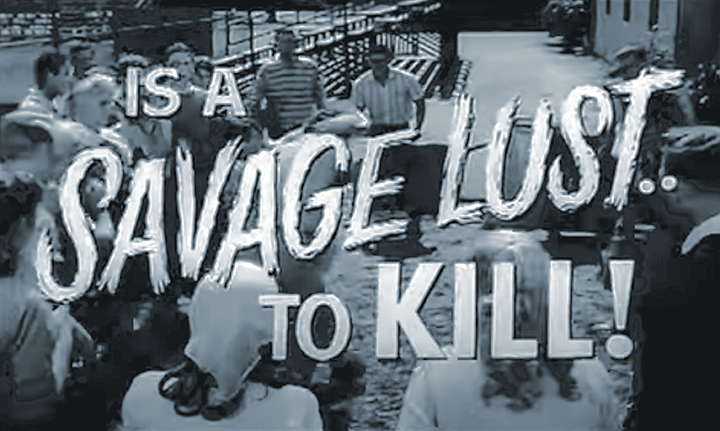
Produced and co-written by Herman Cohen, “I Was a Teenage Werewolf” hits the ground running with a fistfight between Tony and fellow Rockdale High student Jimmy (Tony Marshall) by the bleachers, as the rest of the school, practically, cheers them on. Bigger and more muscular than Tony, Jimmy gives his opponent a bloody lip. Disadvantaged Tony then plays dirty, swinging a shovel and throwing dirt in Jimmy’s eyes.
The law arrives to break up the fight. Tough-but-understanding Detective Donovan (Barney Phillips) questions the boys, concluding that Tony was, as usual, the aggressor. Donovan insists that the boys make nice and shake hands.
“People bug me,” Tony admits to the detective. “That’s right, hide behind jive talk,” Donovan replies. He recommends that Tony see Dr. Alfred Bradford (Whit Bissell, an actor made for roles like this). “He’s modern. He uses hypnosis,” Donovan says of the doctor. “No headshrinker for me, thank you,” Tony shoots back. “You keep the man in the white coat for the goofs. I can take care of myself.”
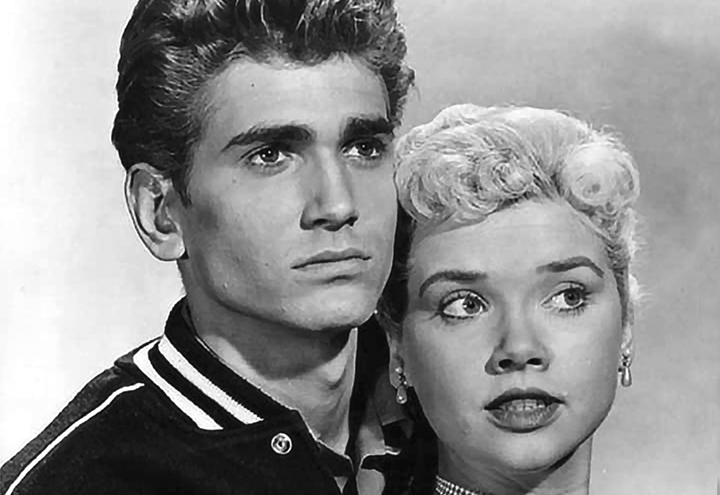
During all of this, an innocent blonde — almost every movie heroine in the 1950s was blond — named Arlene (Yvonne Lime) has been waiting for Tony at the bleachers. She agrees with the detective that Tony should get help, but he maintains his steely reluctance.
A glimpse of Tony’s home life may explain a thing or two. Mom is dead. Tony’s father, Charles (Malcolm Atterby), is a night-shifter who urges his son not to rock the boat. “Sometimes you just gotta do it the other fella’s way,” is Charles’ advice.
When Tony honks instead of ringing the doorbell to pick up Arlene for a date — they’re going to a Halloween party — her parents insist on meeting him. Arlene’s dad tells the boy: “I like things formal once in a while. We just wanted to look at you before you take our daughter out to a party.”
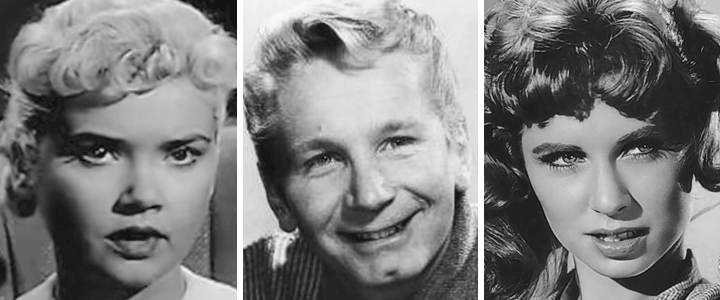
Some nice, light choreography introduces the party sequence. The music at the bash is more jazzy than rock-y. A goofy guy named Vic (Ken Miller), obviously the Jughead of the gang, prefers playing bongos to dancing with his girl, Pearl (Cindy Robbins). But when Vic sings the Jerry Blaine-penned rocker “Eeny Meeny Miney Moe,” he and Pearl do a cute dance. This being a Halloween party and all, the kids play good-natured tricks on each other. When Vic plays one on Tony, he is repeatedly punched for his effort. This party is ruined.
Even Tony recognizes that this outburst was the last straw, and he agrees to see Dr. Bradford. Out of the box, the doc give Tony a sedative. Bradford tells his skittish assistant, Hugo (Joseph Mell), that he’s finally found the perfect specimen to complete his experiment. How many mad doctors in how many horror movies have said that?
Adds the doc with feverish glee: “Through hypnosis, I’m going to regress this boy back, back into the primitive past that lurks within him. I’m going to transform him, and unleash the savage instincts that lie hidden within.” Didn’t Bela Lugosi say the same thing in, like, 1943?
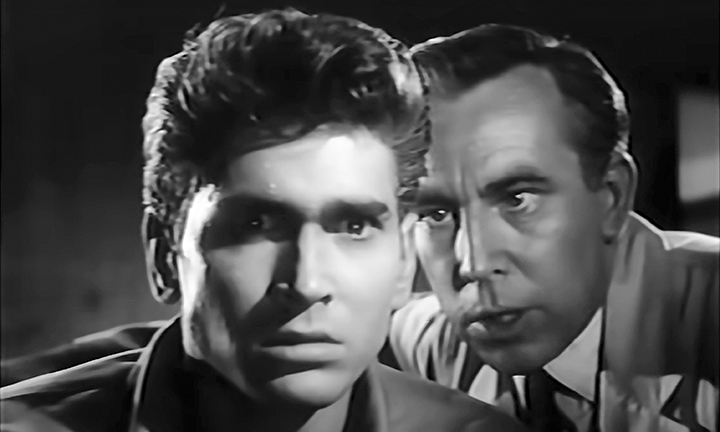
So why is the doc so obsessed? He’s got a beauty of a rationale, related to 1950s paranoia wrought by the atomic bomb: “Mankind is on the verge of destroying itself. The only hope for the human race is to hurl it back into its primitive dawn, to start all over again.” The science is vague, but whaddaya want? It’s a monster movie.
Dr. Bradford juices up Tony with unpronounceable chemicals, and interviews him in his altered state, encouraging him to regress. As time passes, doctor and patient continue these treatments — not that this is going to turn Tony into a werewolf or anything.
After another get-together of the high-school gang, Tony takes Adele home. They pass Frank (Michael Rougas), and offer him a ride. No thanks, says Frank, he’ll walk. Like the so-called “red shirts” of TV’s “Star Trek,” Frank will not last three minutes more. Sure enough, he becomes the Teenage Werewolf’s first victim. But we, the viewers, do not see the monster. Ooh … restraint.
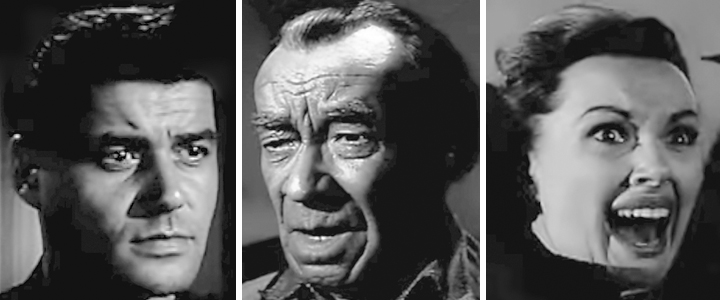
After the boy’s mangled body is discovered, Chief Baker (Robert Griffin) — balding, no nonsense — is on the case. Guy Williams, then on the cusp of stardom as the title avenger of Disney’s TV series “Zorro,” must be the hunkiest desk cop in the movies. As the police-station janitor Pepe, Moscow native Vladimir Sokoloff brings a little of the old Universal Pictures flavor to American International, with his authentic Old World accent, not to mention his authentically lined face. (Sokoloff was never in a Universal horror film, but he did act in a Boris Karloff vehicle: Warner Brothers’ 1937 war drama “West of Shanghai.” Regrettably, both Sokoloff and Karloff wore eye makeup in order to play Chinese characters. It was a thing back then.)
“He was killed by a werewolf,” Pepe says, crossing himself, Roman Catholic-style. “In the old country, in my little village in the Carpathian Mountains, there was a story passed down from generation to generation. Some say it was a legend, but I know it was the truth.” Pepe helpfully defines the term werewolf for teens in the audience who didn’t remember “The Wolf Man”: “It’s a human being possessed by a wolf.”
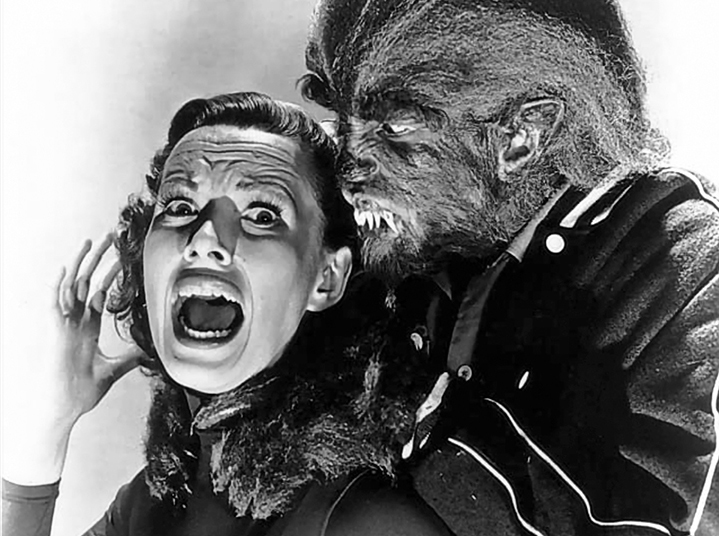
Back at Rockdale High, gymnast Theresa (Dawn Richard) asks permission to continue practicing past her allotted workout time. We immediately recognize her as Victim #2. Perhaps in keeping with the 1950s teenage theme, this werewolf has a pompadour.
Witnesses identify the werewolf as Tony. Chief Baker and newspaperman Doyle (Eddie Marr) butt heads, as cops and reporters do in these types of movies. When police question Dr. Bradford about the werewolf rumor, he plays the part of the pragmatic scientist to perfection: “This is America, modern America, not a hamlet in the Carpathian Mountains.”
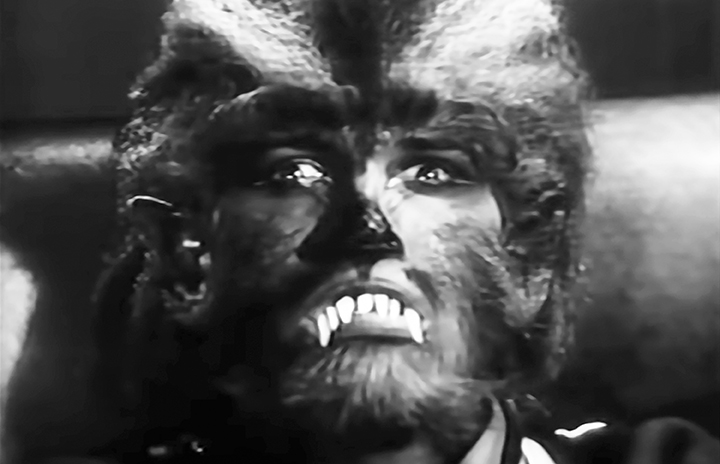
Will Dr. Bradford get his comeuppance? Will Hugo intervene on Tony’s behalf? Will Vic score a hit single with “Eeny Meeny Miney Moe”?
There are two more Universal references. No. 1, the posse hunts the werewolf carrying torches. No. 2, the werewolf reverts back to human form in death, “Wolf Man”-style. But there are deviations from classic lycanthropy as well. In his dissertation on werewolves, Pepe doesn’t mention full moons, because after all, this werewolf’s origin story is kinda modern. Also, the werewolf is killed by regular old bullets, saving the mess and expense of making silver bullets.
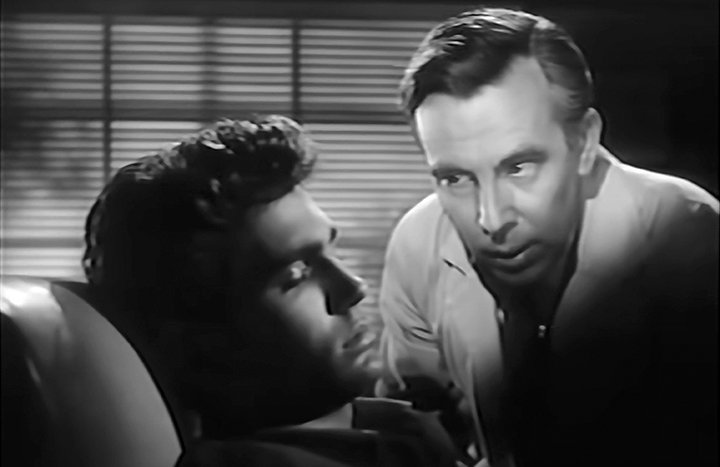
The cinematography by Joseph LaShelle is typical of American International Pictures in those days; it can be inventive, but often feels rushed. Like Floyd Crosby — an Oscar-winning cinematographer who sometimes “slummed it” in AIP films — LaShelle had many prestigious productions on his resume. He also shot “Where the Sidewalk Ends” (1950), a classic noir starring Dana Andrews; “Marty” (1955), an Oscar-winner for Ernest Borgnine; and Billy Wilder’s black comedy “The Apartment” (1960) starring Jack Lemmon and Shirley MacLaine.
LaShelle’s work here makes “I Was a Teenage Werewolf,” if not a great movie, better than “I Was a Teenage Frankenstein.” Memorable examples: Our first full view of the werewolf is upside-down. (It’s a POV shot; the victim played by Richard is, herself, hanging upside-down when she first sees him.) And when Bissell interrogates Landon, LaShelle frames it in extreme closeup, a visual metaphor for the unfolding psychodrama.
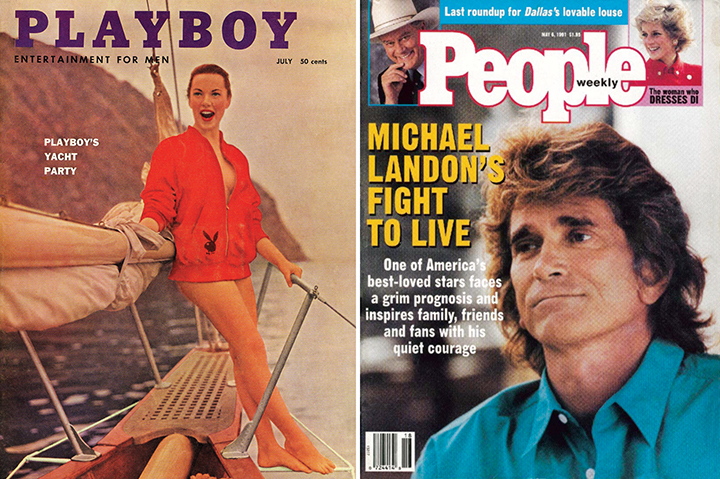
If Richard seemed a bit sexy and grown up for a high school student, it may be because the actress, then 22, was a centerfold model for Playboy around that time. Not surprisingly, her image was used prominently in the movie poster and stills, despite her brief time on screen.
Landon is good — James Dean good. It’s no wonder he moved on to bigger and better things. When AIP brought back the Teenage Werewolf and the Teenage Frankenstein for its meta horror film “How to Make a Monster” in 1958, Landon did not reprise his role (unlike “I Was a Teenage Frankenstein” star Gary Conway).
Landon’s breakthrough came the following year: He was cast as Little Joe in the 1959-73 television institution “Bonanza.” When Landon died from cancer at age 54 in 1991, most obituaries focused on the actor’s work in the better-known “Bonanza,” “Little House on the Prairie” and “Highway to Heaven.” But we monster nerds will never forget the werewolf in Landon’s closet.
‘I WAS A TEENAGE WEREWOLF’
Michael Landon as Tony; Whit Bissell as Dr. Bradford; Yvonne Lime as Arlene; Ken Miller as Vic; Vladimir Sokoloff as Pepe; and Dawn Richard as Theresa
Written by Herman Cohen and Aben Kandel
Music by Paul Dunlap | Cinematography by Joseph LaShelle
Executive produced by James H. Nicholson and Samuel Z. Arkoff
Produced by Cohen | Directed by Gene Fowler Jr.
[American International Pictures]
VIDEOS
The full movie is above. “The most amazing motion picture of our time!”
Ya gotta hand it to AIP — the trailer really sells the movie.
POSTERS & LOBBY CARD
Unbilled Richard is prominent in the “IWATW” poster. Can ya blame ’em?
A French-German advertisement touts Landon’s “Bonanza” role. (We monster nerds always knew what a loup-garou was.)
Lime and Landon canoodle at the the bleachers in this lobby card.
